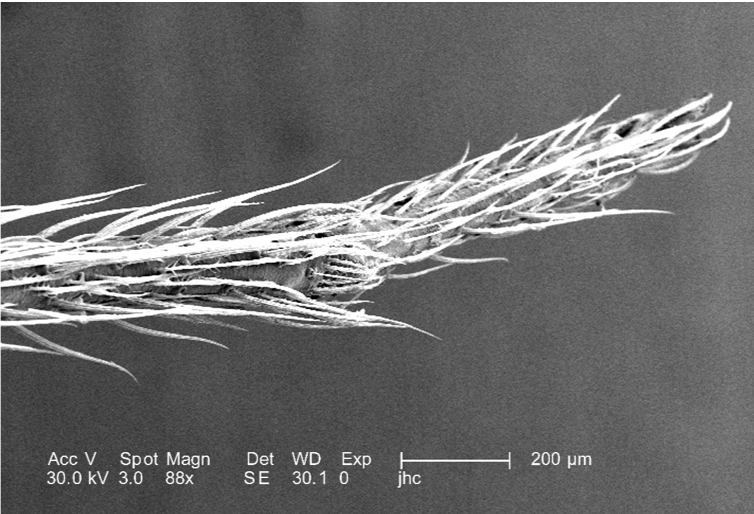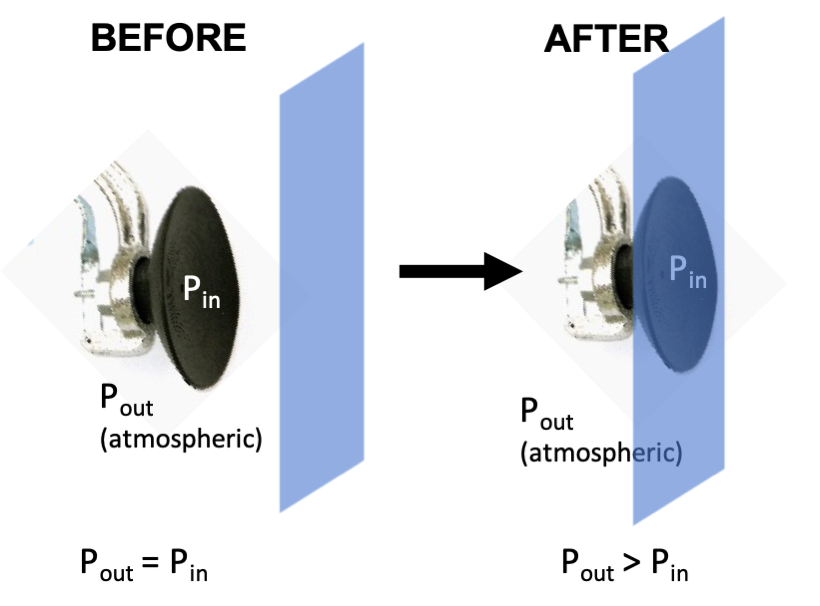Like many people, I fantasized about being a super hero when I was younger. How cool would it be to save the day from a criminal mastermind who’s out to steal the world’s supply of chocolate?? Now that I’ve grown up a bit (debatable), I find myself still thinking about super heroes, although with a bit of a different spin.
As an example of these ponderings, let’s take a look at Spider-Man. I would love to be able to shoot webs from my wrists, have hair like Toby Maguire, and run up walls. You might expect a scientific contemplation about Spider-Man would ask, “How would a spider bite change your DNA to give you super-powers?” But no, the question I asked myself was, “Would Spider-Man actually be able to climb walls using the same mechanism as spiders?”

To start answering this question, let’s do my favorite thing when speaking hypothetically and make some wild assumptions. Let’s assume that radioactive spiders a) exist, and b) can give you super awesome powers. (As if spiders weren’t intimidating enough already…) Now we can dig into the science of how spiders climb walls, and whether that same mechanism could work for Spider-Man.
First, we have to know how spiders stick to smooth surfaces. The answer is, of course, nanoscience! More specifically, spiders have hairy feet.1,2 No, not like hobbit feet: the hair on a spider’s foot is only several hundred nanometers wide. That’s about 100 times thinner than a human hair! These small hairs are called setae, and they help a spider stick to smooth surfaces by increasing contact area. This, in turn, increases the amount of Van der Waals forces felt at the atomic scale. (These weak forces are essentially small attractive forces caused by slight shifts in electron density. For more about Van der Waals forces and nanoscale stickiness, see our blog post about how ivy plants stick to walls.)
A particular type of jumping spider, known as Evarcha arcuata, has about 78,000 of these tiny hairs on each foot, which means the spider has a total of 624,000 hairs. If even a fraction of those hairs are making contact with the surface at any one time, those “weak” Van der Waals forces add up to a lot of adhesive strength!2

Now that we know how spiders stick to walls, let’s see if we can do that math for people! Oh, wait a minute… Has it already been done? It turns out that someone asked this exact question, and they published a peer-reviewed scientific paper about it!3 According to their findings, the ratio of body volume to body mass is the most important thing in figuring out how big you need to make spider-leg-like adhesive pads to hold up animals or insects of different sizes.

Since smaller creatures have a much lower body mass to body volume ratio, they do not need very large adhesive pads. Larger animals with a higher body mass to body volume ratio, however, need adhesive pads that cover a larger percentage of their body to stick.

The authors of the study claim that geckos (which also use this mechanism for sticking, as we talked about in this blog post) are approximately the size limit for animals that can use this mechanism to stick to smooth surfaces. According to their calculations, humans would need to have about 40% of their body covered with these tiny hairs to stick to a wall, which would require Spider-Man to have US size 114 feet!6

After the idea of spider-style nano-hairs was debunked, I wondered, what would be the best way to actually climb walls? The answer: suction cups. There are a few caveats, like suction cups only work on smooth surfaces. But again, let’s make a wild assumption that every surface we want to climb is smooth. In that case, a Spider-Man-like ability to climb is not unreasonable! And understanding how suction cups work is more intuitive than spider stickiness; they work by suction, AKA vacuum.

To understand how suction cups work, let’s examine the pressures involved. In the figure above, Pout stands for the pressure outside the suction cup, which is atmospheric pressure (the pressure we experience walking around on a normal day). Pin stands for the pressure inside the suction cup. Before the suction cup is pressed against the smooth surface, Pin is also atmospheric pressure. After the suction cup is pressed against the smooth surface, however, the pressure inside the suction cup (Pin) is less than atmospheric pressure (Pout) because we have pushed all the air out of that space. In other words, the amount of gas (air) inside the suction cup decreased while the volume did not decrease by the same ratio.
We can understand this change in pressure by looking at the ideal gas law, PV = nRT, where P is the pressure, V is the volume, n is the moles of gas, R is the ideal gas constant, and T is temperature. (This law may be familiar if you read our post about Deflate Gatea few years ago). If we assume that volume and temperature are constants (more or less), then only pressure and the amount of gas are changing. We can then rearrange the equation so that we can show an initial and final state – before and after pushing in the suction cup:

Pushing down on the suction cup reduces the amount of gas in the suction cup from ninitialto nfinal. Given the decrease in the amount of gas, Pfinalmust then be less than Pinitialin order for volume and temperature to remain constant.
Therefore, after the suction cup is pressed against the surface, Pout is greater than Pin, and so the atmospheric pressure pushes the suction cup toward the wall! When you add in friction between the suction cup and the smooth surface, it means the suction cup will remain in position and even hold some additional amount of weight.

Based on our calculations, it then follows that the pressure difference between Pin and Pout is crucial in determining how much weight the suction cup can hold. The size of the suction cup also influences how much weight it can hold, as larger suction cups have more contact area with the surface, thereby increasing the total force of friction.
Now that we know how suction cups work, we can come back to our original question: How large would they have to be and what kind of vacuum would they have to pull to hold up a human? It turns out that, because so many robotics in production lines use suction cups, this math has already been done. According to Gast Manufacturing’s calculations,7using a fairly easily attainable vacuum, a 200 lb person would need two 8” suction cups to hold their weight with some room to spare.
Crazily enough, this strategy has been used before to scale buildings! In 1981, Dan Goodwin climbed the then Sears Tower using only suction cups (and skyhooks in case of emergency). You can find a video of the feat here. The Mythbusters also tested the use of suction cups for climbing in their 54thepisode, “Crimes and Myth-Demeanors 1: Great Hollywood Heists,” although they used an electronic vacuum system which proved difficult. While suction cups can allow humans to scale walls, they are too slow to be useful when there is crime to be fought!
All in all, it does not seem feasible for humans to scale walls like spiders or geckos (unless we wear comically large shoes), but suction cups do offer a slow solution to wall scaling! Still, crime-fighting superheroes using suction cups just doesn’t seem as exciting…
- Kesel, A.B.; Martin, A.; Seidl, T. Getting a grip on spider attachment: an AFM approach to microstructure adhesion in arthropods. Smart Materials and Structures, 2004, 3 (13), 512. doi: 10.1088/0964-1726/13/3/009
- Kesel, A.B.; Martin, A.; Seidl, T. Adhesion measurements on the attachment devices of the jumping spider Evarcha arcuata, Journal of Experimental Biology, 2003, 206, 9733. doi: 10.1242/jeb.00478
- Labonte, D.; Clemente, C.J.; Dittrich, A.; Kuo, C-Y.; Crosby, A.J.; Irschick, D.J.; Federle, W. Extreme positive allometry of animal adhesive pads and the size limits of adhesion-based climbing. PNAS. 2016. 113 (5) 1297-1302. doi: 10.1073/pnas.1519459113
- Stark, A., Sullivan, T., & Niewiarowski, P. The effect of surface water and wetting on gecko adhesion.Journal of Experimental Biology, 2012, 215: 3080-3086. doi: 10.1242/jeb.070912
- Roth, G. & Dicke, U. Evolution of the brain and intelligence. Trends in Cognitive Sciences, 2005, 9(5) 250-257. doi: 10.1016/j.tics.2005.03.005
- “Why Spider-Man can’t exist: Geckos are ‘size limit’ for sticking to walls”, University of Cambridge Research News, 18 January 2016.
- “Calculating the Lifting Force of Suction Cups”, Gast Manufacturing.
